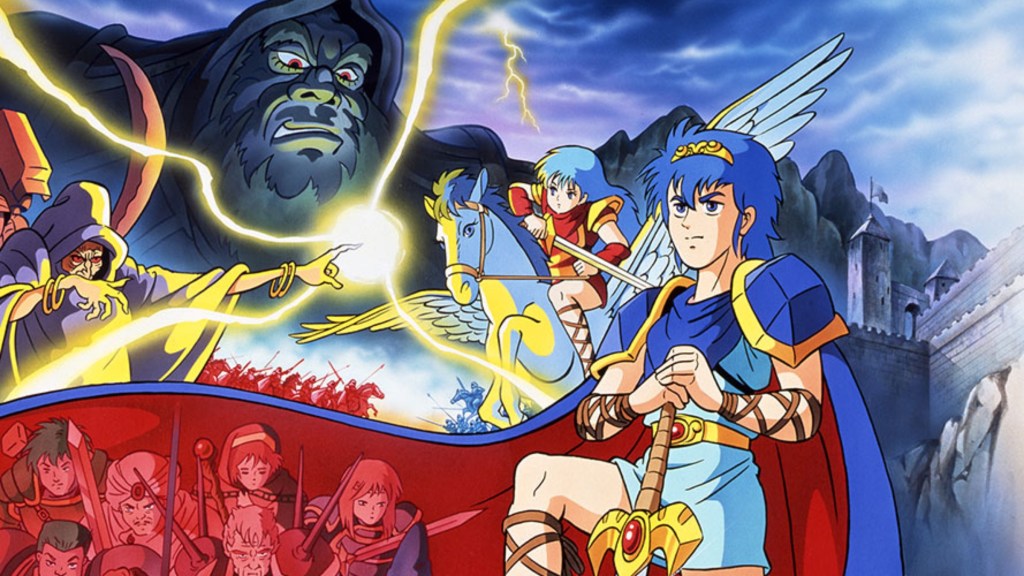Initially beginning as a passion project with little hope of ever making it out of the Japanese market, this strategy series that debuted 35 years ago has become Nintendo’s premier tactical franchise. Nintendo has plenty of top-tier gaming franchises, with the likes of Super Mario Bros., The Legend of Zelda, Pokémon, and more helping cement the publisher as the gold standard of the medium.
Videos by ComicBook.com
Despite developing a loyal fanbase in Japan and earning massive revenues from one of its flagship franchises, however, Nintendo’s biggest strategy series — which debuted in 1990 — took until 2003 to actually make the leap to Western markets. Since then, it’s become a global fixture for the strategy game market and a perfect entry point for casual gamers looking to explore the genre. Here’s how Fire Emblem went from a minor release to a fan-favorite fixture of the Nintendo library.
Fire Emblem Has Been A Nintendo Fixture For Over Three Decades

Debuting in 1990 on the Nintendo Entertainment System with Fire Emblem: Shadow Dragon and the Blade of Light, Fire Emblem has grown to become one of the foundational tactical strategy franchises in modern gaming. Initially, the title was seen as a passion project by creator Shouzou Kaga and his fellow developers.
Designed as a tactical strategy game where players could care about the characters in the same way they would with an RPG, Fire Emblem‘s developers endeavored to make every decision feel fateful and important. The unexpected commercial success of the title led to the series expanding into a full franchise. While it was far from the first tactical strategy title in video games, Fire Emblem fused it with the storytelling ambition and character focus of a traditional RPG. The unique tweak was that every unit was given a unique personality that made them stand out.
This focus on specific characters also plays into the series’ most iconic tweak on the formula: when a unit dies, they stay dead. As a result, rather than simply sending nameless forces into constant deadly combat, players found themselves instinctively doing their best to protect characters they grew to care about. However, combat is the only surefire way to level them up, requiring a certain amount of necessary risk to go with the potential reward.
Bolstered by increasingly artistic character designs, ambitious storytelling, and mesmerizing music, Fire Emblem quickly became a fixture for Nintendo. To date, there have been seventeen games in the series, speaking to Nintendo’s commitment to the franchise. There’s a level of depth to the gameplay, with the initially simplistic “rock-paper-scissors” style of combat giving way to far more expansive depth with each successive title. The game’s willingness to explore different time periods and generations of characters broadened the horizon for players, creating a world that feels genuinely epic in comparison to other game series. This has led to Fire Emblem becoming a consistent fixture in the Nintendo library, at least for Japanese players.
How Fire Emblem Came To The West

Notably, Fire Emblem was among the few mainstream Nintendo hits in Japan that took a very long time to come to Western markets. Despite the popularity of Nintendo in the West, Fire Emblem was kept as a Japan-exclusive for over a decade. For a long time, the publisher feared that the punishing difficulty spike and perma-death for characters would make it too challenging for broad audiences in America and Europe. However, two developments at the turn of the century changed that.
First, Advance Wars launched on the Game Boy Advance. Exceeding expectations, Nintendo became convinced that Nintendo might be ready for the more in-depth strategy and expansive lore of the Fire Emblem franchise. More than that, though, was the inclusion of Marth and Roy in Super Smash Bros. Melee. The fighting game, which remains one of Nintendo’s most acclaimed party fighting titles, quickly won over fans who had never seen the two characters before by pitting them against the likes of Mario, Link, and Pikachu.
The fanbase for the two characters exploded in the United States and Europe, convincing Nintendo to expand the series. Quickly finding success on the Game Boy Advance, Fire Emblem‘s expansive storytelling and tight strategy gameplay proved profitable for Nintendo, leading to the larger expansion of the franchise on a global scale. The result has been a series that has never abandoned the root gameplay mechanics while finding new ways to expand the tactical strategy.
35 Years Later, Fire Emblem Is Still A Masterclass In Strategy Gaming

Even compared to other tactical strategy games, Fire Emblem remains the gold standard of the genre. There’s a level of world-building and character depth that puts other titles to shame. The game’s epic nature lends itself to the kind of storytelling that game franchises like The Lord of the Rings and Game of Thrones have prided themselves on achieving. There are entire paths, characters, and stories that can be inaccessible if the player’s choices push them down specific routes.
Titles like Fire Emblem: Three Houses showcase how the series can adapt to modern sensibilities and elements, all while retaining the compelling layers and distinctive characters that have always been at the core of the series. Even looking back at the original Fire Emblem, there was already a level of ambition baked into the premise that other tactical RPGs couldn’t match.
So many titles struggle to reach the level of ambitious character depth that’s been core to the series since the very beginning and continues to impress with each new title. As someone who was introduced to the series in 2003 with the American release of Fire Emblem on the GBA, I was taken in by the worldbuilding and simple-to-learn/hard-to-master gameplay. As I’ve grown older and explored both earlier and later entries in the series, the overall depth has continued to stand out amidst a crowded field of strong strategy games. Fire Emblem has become one of the undersung classics of the genre and continues to grow in prominence with each year.








